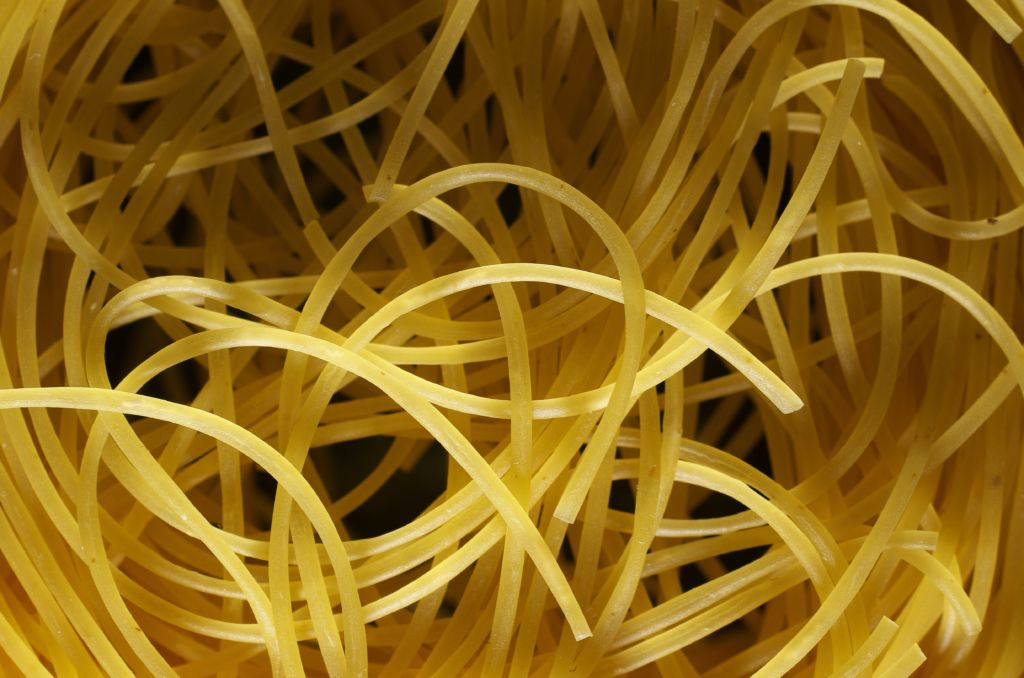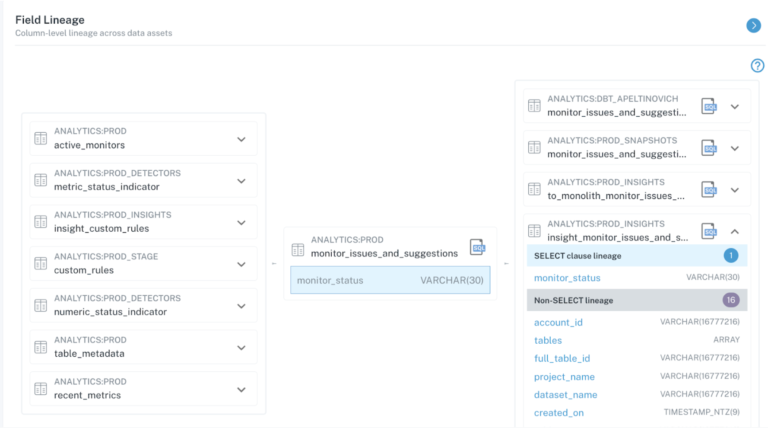
[ad_1]
Knowledge lineage will not be new, nonetheless automation has lastly made it accessible and scalable-to a certain extent.
Inside the earlier days (strategy as quickly as further all via the mid-2010s), lineage occurred by various handbook work. This involved determining information belongings, monitoring them to their ingestion sources, documenting these sources, mapping the path of information due to it moved by assorted pipelines and ranges of transformation, and pinpointing the place the information was served up in dashboards and evaluation. This regular methodology of documenting lineage was time-intensive and nearly inconceivable to maintain up.
Appropriate now, automation and machine discovering out have made it doable for distributors to start out out out offering information lineage choices at scale. And information lineage should completely be a part of the modern information stack-but if lineage will not be accomplished proper, these new variations may be little better than eye candy.
So it’s time to dive deeper. Let’s uncover how the current dialog spherical information lineage is broken, and one of many easiest methods companies in search of important enterprise value can restore it.
What’s information lineage? And why does it matter?
First, a quick refresher. Knowledge lineage is a kind of metadata that traces relationships between upstream and downstream dependencies in your information pipelines. Lineage is all about mapping: the place your information comes from, one of many easiest methods it modifications due to it strikes all via your pipelines, and the place it’s surfaced to your end clients.
As information stacks develop extra troublesome, mapping lineage turns into further sturdy. Nonetheless when accomplished proper, information lineage could be very useful. Knowledge lineage choices help information teams:
- Understand how modifications to specific belongings will impact downstream dependencies, so they don’t should work blindly and hazard unwelcome surprises for unknown stakeholders.
- Troubleshoot the muse rationalization for information parts sooner after they do occur, by making it easy to see at-a-glance what upstream errors would possibly want launched on a report once more to interrupt.
- Converse the impact of broken information to clients who rely upon downstream evaluation and tables-proactively preserving all of them via the loop when information may be inaccurate and notifying them when any parts have been resolved.
- Larger understand possession and dependencies in decentralized information workers constructions an similar to the information mesh.
Sadly, some new approaches to information lineage focus extra on partaking graphs than compiling a rich, useful map. In distinction to the end-to-end lineage achieved by information observability, these surface-level approaches don’t current the sturdy effectivity and full, field-level safety required to ship all the price that lineage can current.

Don’t let your information lineage flip right correct proper right into a plate of spaghetti. Image courtesy of Immo Wegmann on Unsplash.
Let’s uncover alerts that time out a lineage reply may be broken, and strategies information teams can uncover the next strategy.
1. Take note of top quality over quantity by lineage
Fashionable companies are hungry to point into information-driven, nonetheless gathering extra information will not be usually what’s best for the enterprise. Knowledge that isn’t associated or useful for analytics can merely flip into noise. Amassing important troves of information wouldn’t robotically translate to extra value-but it does guarantee bigger storage and maintenance costs.
That’s the clarification large information is getting smaller. Gartner predicts that 70% of organizations will shift their focus from large information to small and huge information over the next couple of years, adopting an strategy that reduces dependencies whereas facilitating extra terribly surroundings pleasant analytics and AI.
Lineage should play a key place in these alternate choices. Barely than merely using automation to grab and produce surface-level graphs of information, lineage choices should embrace pertinent info resembling which belongings are getting used and by whom. With this fuller picture of information utilization, teams can begin to get a greater understanding of what information is most helpful to their group. Outdated tables or belongings which is likely to be not getting used is more likely to be deprecated to keep away from potential parts and confusion downstream, and help the enterprise give consideration to information top quality over quantity.
2. Ground what components by field-level information lineage
Petr Janda merely these days printed an article about how information teams should cope with lineage extra like maps-specifically, like Google Maps. He argues that lineage choices should have the flexibleness to facilitate a query to hunt out what you is more likely to be in search of, pretty than relying on troublesome visuals which is likely to be sturdy to navigate by. As an illustration, you need to to have the flexibleness to hunt for a grocery retailer whilst you desire a grocery retailer, with out your view being cluttered by the encircling espresso retailers and gasoline stations that you don’t actually care about. “In inside the current day’s devices, information lineage potential is untapped,” Petr writes. “Except for a few filters, the lineage experiences are typically not designed to hunt out components; they’re designed to diploma out components. That could possibly be a big distinction.”
We couldn’t agree extra. Knowledge teams needn’t see each difficulty about their information-they need to have the flexibleness to hunt out what components to unravel an issue or reply a question.
For that motive field-level lineage is essential. Whereas table-level lineage has been the norm for fairly just a few years, when information engineers have to understand exactly why or how their pipelines break, they need extra granularity. Self-discipline-level lineage helps teams zero in on the impact of specific code, operational, and information modifications on downstream fields and evaluation.
When information breaks, field-level lineage can flooring maybe important and broadly used downstream evaluation which is likely to be impacted. And that exact same lineage reduces time-to-resolution by allowing information teams to quickly trace as quickly as further to the muse rationalization for information parts.
3. Cope with information lineage for clearer interpretation
Knowledge lineage can observe all via the footsteps of Google Maps in a single fully completely different strategy: by making it easy and clear to interpret the occasion and symbols utilized in lineage.
Merely as Google Maps makes use of mounted icons and hues to diploma styles of corporations (like gasoline stations and grocery retailers), information lineage choices should make use of clear naming conventions and hues for the information it’s describing, all one of many easiest methods correct proper all the way down to the logos used for the totally fully fully completely different devices that make up our information pipelines.
As information strategies develop an increasing number of more durable, organizing lineage for clear interpretation will help teams get maybe mainly primarily essentially the most value out of their lineage as quickly as doable.
4. Embody the appropriate context in information lineage
Whereas amassing extra information for information‘s sake couldn’t help meet your group desires, gathering and organizing extra metadata-with the appropriate enterprise context-is in all probability a beautiful suggestion. Knowledge lineage that decisions rich, contextual metadata could be very useful because of it helps teams troubleshoot sooner and understand how potential schema modifications will impact downstream evaluation and stakeholders.
With the appropriate metadata for a given information asset included all via the lineage itself, it’s potential you’ll get the alternatives you need to make educated alternate choices:
- Who owns this information asset?
- The place does this asset reside?
- What information does it embrace?
- Is it associated and essential to stakeholders?
- Who’s relying on this asset after I am making a change to it?
When one amongst these contextual particulars about how information belongings are used inside your group is surfaced and searchable by sturdy information lineage, incident administration turns into simpler. You could resolve information downtime sooner, and talk the standing of impacted information belongings to the associated stakeholders in your group.
5. Scale information lineage to fulfill the desires of the enterprise
Ultimately, information lineage must be rich, useful, and scaleable as a way to be helpful. In every completely different case, it’s merely eye candy that seems good in authorities reveals nonetheless wouldn’t do barely somewhat quite a bit to actually help teams cease information incidents or resolve them sooner after they do occur.
We talked about earlier that lineage has flip into the most recent new layer all via the information stack on account of automation. And it’s true that automation solves half of this draw again: it will truly help lineage scale to accommodate new information sources, new pipelines, and extra troublesome transformations.
The alternative half? Making lineage useful by integrating metadata about your whole information belongings and pipelines in a single cohesive view.
As shortly as extra, take into accounts maps. A map will not be useful if it solely reveals a portion of what exists inside the precise world. With out full safety, it’s potential you’ll’t rely upon a map to hunt out each difficulty you need or to navigate from stage A to stage B. The identical is true for information lineage.
Knowledge lineage choices ought to scale by automation with out skimping on safety. Every ingestor, every pipeline, every layer of the stack, and every report should be accounted for, all one of many easiest methods correct proper all the way down to the sphere level-while being rich and discoverable so teams can uncover exactly what they’re in search of, with a clear group that makes info easy to interpret, and the appropriate contextual metadata to help teams make swift alternate choices.
Like we talked about: lineage is troublesome. Nonetheless when accomplished proper, it is usually terribly terribly surroundings pleasant.
Bottom line: if information lineage will not be useful, it will not matter

Monte Carlo’s field-level lineage surfaces context about information incidents in precise time, forward of they impact downstream strategies.
Though it seems to be like information lineage is in every single place proper now, consider the truth that we’re moreover all via the early days of automated lineage. Selections will proceed to be refined and improved, and as long as you is more likely to be armed with the knowledge of what high-quality lineage ought to look like, will maybe be thrilling to see the place the enterprise is headed.
Our hope? Lineage will flip into somewhat quite a bit quite a bit a lot much less about partaking graphs and extra about terribly surroundings pleasant effectivity, like the following Google Maps.
Ought to see the flexibleness of information lineage in movement? Analysis one of many easiest methods the information engineering workers at Resident makes use of lineage and observability to chop again information incidents by 90%.
The put up Knowledge Lineage is Broken – Appropriate correct proper right here Are 5 Selections To Restore It appeared first on Datafloq.
[ad_2]